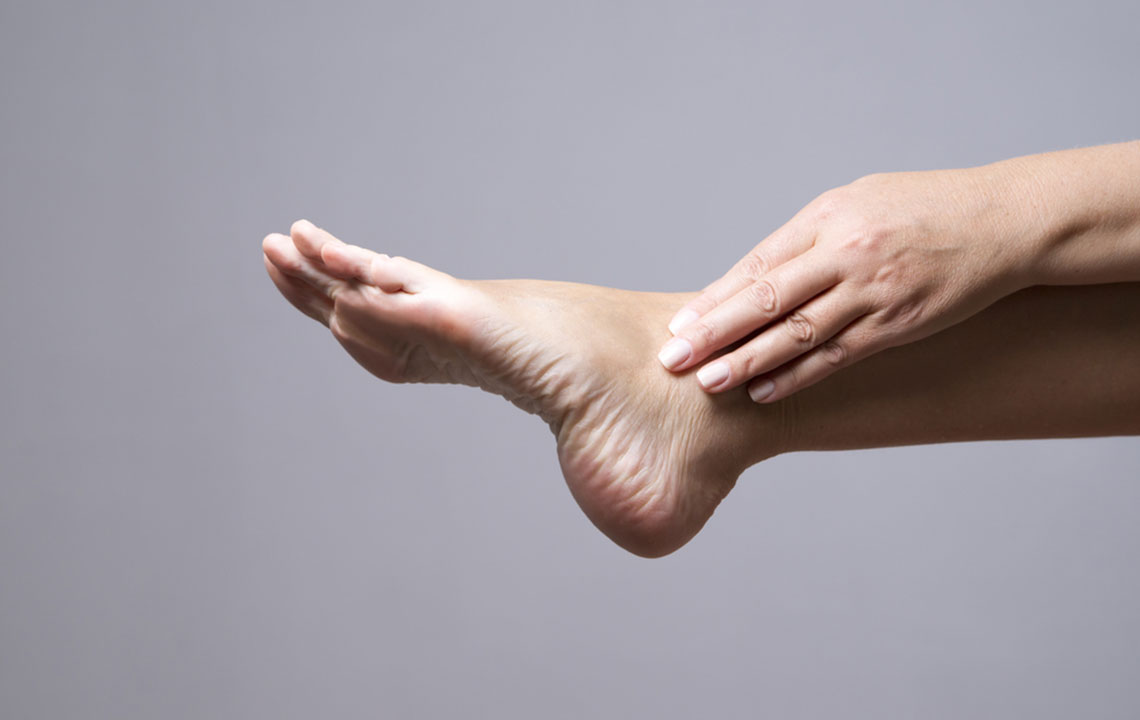Bottom of Foot Pain – Causes, Symptoms, and Diagnosis

There might be many reasons for the bottom of foot pain, and it is important to remember that not all of this pain gets originated in the toes or upper and lower region of the foot. These also do not necessarily develop due to injury in the foot.
Bottom of foot pain also arises at times due to problems in the lower back region. Sometimes foot pain arises due to associated pain in the legs.
Symptoms of bottom of foot pain symptoms
Limited ability to bring the foot up
Patients who suffer from this symptom are not able to move the feet forward and sometimes face numbness in the foot. This condition occurs when one of the spinal nerve roots in the lower back gets pressed.
Foot heaviness and weakness
This pain originates in spinal nerve root in the lower back; foot heaviness produces pain that radiates down over the top of feet and goes to the bottom of feet.
Difficulty in walking on tiptoes
Bottom of foot pain also occurs in case the sciatic nerve spinal nerve root gets pressed. Some of the typical symptoms of this condition include weakness of gastrocnemius muscles, and it makes walking on tiptoes difficult. The person who suffers from this medical complication is also not able to raise the heel from the ground and finds it difficult to walk and move around.
Causes of foot pain
Bottom of foot pain occurs due to varying diseases and deformities or wearing of improper footwear. Infectious diseases, fungi, and bacteria also cause pain in the foot. Plantar warts and athlete foot are some of the foot diseases which are caused by virus and bacteria. All of these lead to the bottom of foot pain. An ingrown toenail is also a common cause of foot pain. Systemic diseases as gout, rheumatoid arthritis and lupus also result in foot pain.
Foot pain also occurs due to deformities like claw toes, tarsal coalitions, and calcaneal varus. Pain in the forefoot also occurs if tight shoes and high heels are worn.
When do you need medical assistance for foot pain
If the bottom of foot pain begins to interfere with daily life functions, it is time to seek necessary medical assistance. Typical signs on when medical assistance should be sought include deformity in the feet, loss of functioning of the feet, change of sensation of the feet, swelling in the feet accompanied by pain, change of skin or toenail color and tenderness in the feet.
Diagnosis of foot pain
Appropriate evaluation and diagnosis of the pain in the feet are important for the doctors to plan an appropriate course of action. Usually, the injured side of bottom of feet is compared to the uninjured side
Doctors usually grade the pain into four different categories including pain during any activity, pain that originated before or after the activity, before, during and after any activity was performed and the last condition would be a difficult scenario in which the person would not be able to perform or move around.
Examination of feet
The doctor will physically examine the feet in rest condition, in condition when weight and non-weight bearing movement is being performed. Ideally, the doctor will touch the foot and the arch to identify any deformity or tender spots. They will also examine conditions as to how the muscle of foot functions. In these tests holding and moving of feet and ankle against any resistance is practiced. The person is also asked to stand, walk or run. Nerves in the feet will also be examined to check if any injury has occurred.
X-ray, MRI or bone scan is taken in case any abnormality is not evident by physical examination, and the doctor foresees the development of any serious complication.
Medical treatment of bottom of foot pain
As the cause of bottom of foot pain is determined adequate precautionary measures are put in place so that the condition of the patient improves. Doctors usually use ultrasound, electrical stimulations, and laser or manual therapies to reduce the pain. These techniques also increase circulation in the affected areas and thus promote healing.
In certain conditions, the doctors also recommend additional support to be added to the shoes. These might include heel pads, arch supports and different wedges which help in maintaining proper position of feet.
Doctors might also recommend different exercises which help in increasing the strength and stability of the feet. This will also correctly place the muscles which might have been unbalanced and caused this foot pain.
Maintain a rigorous exercise routine as recommended by the doctor to prevent any further aggravation of the situation and take medications as directed. It takes time for foot pain to heal but once it gets better, adequate care should be taken.


